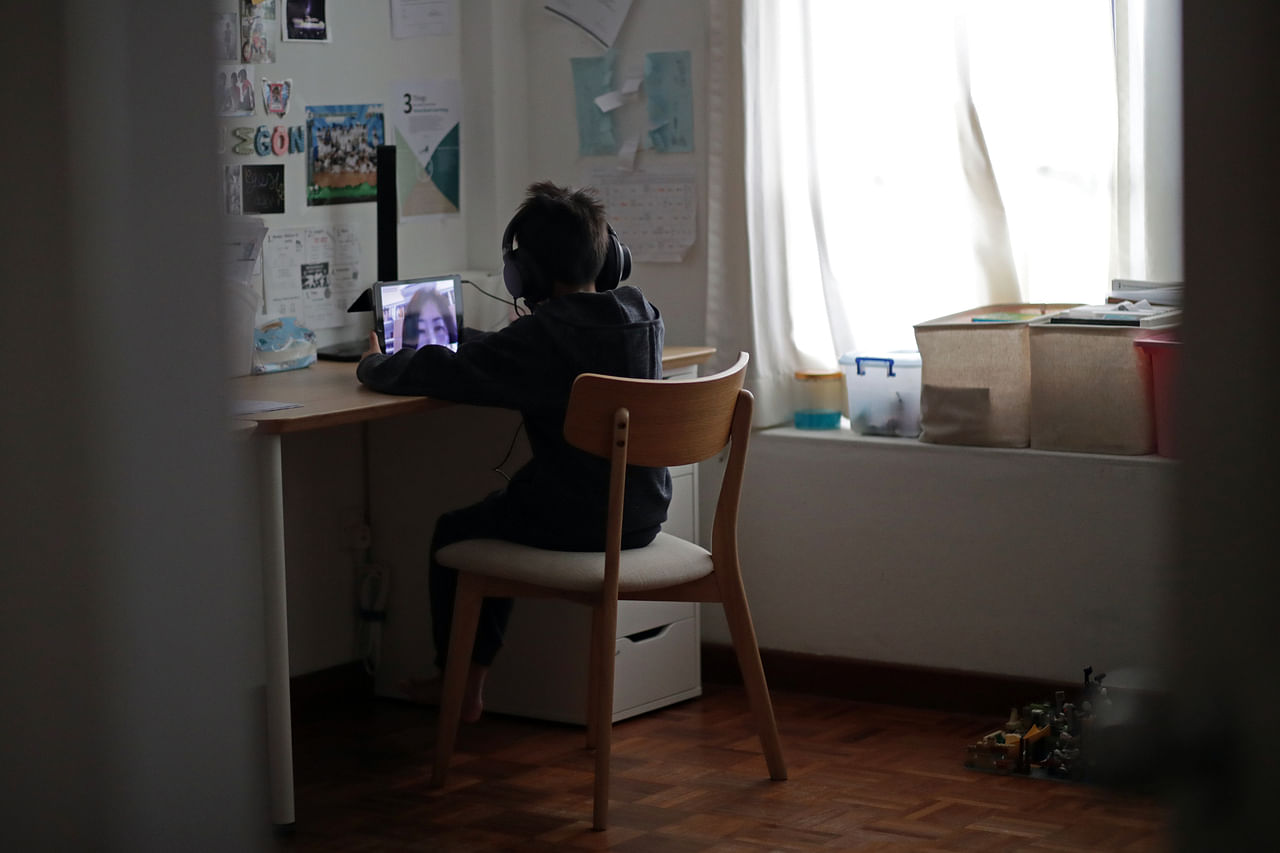Minor Issues
Lessons from home-based learning during circuit breaker period
Sign up now: Get tips on how to help your child succeed

One year on, teachers, students and parents are more adept and confident in the use of digital tools.
PHOTO: ST FILE
Follow topic:
SINGAPORE - It has been a year since we went into the circuit breaker and full home-based learning. Many of us will remember worrying about how the Covid-19 pandemic would affect students.
Parents, especially those with children taking national exams, worried whether the children would be prepared to take these exams. Others were equally stressed about supporting their children for home-based learning, as well as looking after them during the circuit breaker.
It was also not easy for educators because we knew we could not just turn on our Web cameras and conduct lessons online.
The first task was to ensure students could access lesson packages online. The students' online presence did not mean they were accessing the resources or understanding what they were learning. Teachers still had to prepare online assessment tasks or set up virtual meetings to check on the students.
We realised some students had difficulty understanding the online slide presentations. We then added audio explanations. Even this additional effort could not ensure students were learning or engaged in the process.
Many teachers faced a steep learning curve in the initial weeks of full home-based learning. They had to quickly familiarise themselves with and curate quality learning resources for students.
Besides facilitating daily lessons, teachers also had to monitor the well-being of every student.
It would have been easier if every student was online at the same time. But some had to wait until the end of the day for parents or family members to help them log on.
As students are not required to be online all the time, and online meetings between teachers and students took place only once or twice a week, teachers had to phone students to check on their well-being.
As a school leader, I felt it was great to "visit" the online meetings between teachers and students, just like the classroom visits or walks I used to do before the circuit breaker. It was also an opportunity to get a sense of the students' well-being and make my presence felt.
I did have sleepless nights, though, wondering how to provide professional support to my staff and keep up their morale. In my regular online meetings with the staff, we would discuss potential adjustments to the curriculum and assessments.
I did not always have the answers to some issues and we had to think hard as a team to overcome these challenges, especially as there was a possibility that full home-based learning could last for several more months.
Thankfully, the circuit breaker came to an end in June last year. When students returned to school the following month, we had all the students and teachers connect on Google Meet. Every class had a Web camera switched on as they greeted and waved at one another. It was a memorable moment for the school population of 1,200, even if we could not all meet in person due to safe management measures.
Cultural festivals like the Chinese New Year celebrations have also taken on a different form for the school. By "thinking outside the ox", and using interactive media, our students celebrated the festival in their classrooms this year.
They participated in hands-on activities such as folding ox-shaped origami, watched pre-recorded dance performances by students and staff, and learnt about the significance and traditions of the festival.
Somehow, watching an in-house multimedia production and participating in activities in the classroom seem more personal and engaging than gathering in the school hall for a concert.
Cultural celebrations and school events in the future may need to evolve, even if the new normal allows the whole school to gather in one venue.
One year on, teachers, students and parents are more adept and confident in the use of digital tools. Even in primary schools, pupils use portable devices and learning apps more regularly in their curricular and co-curricular lessons.
There is much research and evidence on the benefits of online and blended learning. Apart from the flexibility of learning at their own pace, students have become more self-directed and motivated to pursue their interests.
For example, for our Maths Meets Science Festival, one activity was to create a glider that could fly far using simple materials. Students were observed to be experimenting with different designs and materials, even after school hours.
While some things have changed, others stayed the same. What we know is that students still enjoy learning when they are interacting face to face, even with masks on, with their peers.
They are more engaged when learning is meaningful, authentic and customised. Our efforts to organise learning journeys, provide enrichment opportunities and take learning beyond textbooks are very much appreciated by our students and their families.
The pandemic is like a cocoon that has allowed us time to grow and in our metamorphosis, we have emerged as butterflies ready to find new learning opportunities.
• Charles Chan is a father of five children and the principal of a primary school. He has worked on curriculum development and pre-school education.

